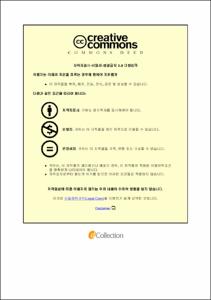Effects of Different Dietary Additives on Growth Performance and Immune Responses in Juvenile Amur Catfish Silurus asotus
- Alternative Title
- 치어기 메기 (Silurus asotus) 에 있어 사료첨가제가 성장 및 면역반응에 미치는 영향
- Abstract
- A feeding trial was conducted to evaluate effects of three dietary additives on growth performance and immune responses in juvenile Amur Catfish Silurus asotus and identify the one that has more positive responses with a lower cost. A basal commercial diet was used as a control (CONT) from which four other diets were prepared by supplementing 0.4% Song-gang® stone (SG), 0.05% Yucca meal (YM), 0.05% β-glucan (BG) and combining 0.04% SG and 0.05% BG (SG+BG). Triplicate groups of fish (initial body weight 4.95±0.05g) were fed one of the test diets between 3-5% of body weight for 8 weeks. At the end of the feeding trial, weight gain (WG), specific growth rate (SGR),
feed efficiency (FE) and protein efficiency ratio (PER) of fish fed SG and SG+BG diets were significantly higher than those of fish fed BG and CONT diets (p<0.05) but not
significantly different from fish fed YM diet. Lysozyme activity in fish fed SG, YM, and SG+BG diets were significantly higher than those of fish fed CONT but not significantly different form those of fish fed BG diet while SOD values were significantly higher among fish fed SG, YM, BG and SG+BG than those of fish fed CONT. After 14 days of intraperitoneal injection with Edwardsiella tarda bacterium, cumulative survival rates of fish fed SG and SG+BG were significantly higher than those of fish fed BG and CONT diets but not significantly different from those of fish fed YM diet. However, there were no significant differences among those of fish fed YM, BG and CONT. Crude protein content was significantly higher while crude lipid content was significantly lower (P<0.05) in fish fed YM diet than those of fish fed the other diets. Serum parameters in fish fed all the experimental diets were not significantly affected. Based on WG, SGR, FE, PER, Lysozyme, SOD and resistance against bacteria, dietary Song-gang stone® and SG+BG could have more positive responses in juvenile Amur catfish Silurus asotus. However,
Song-gang® stone is proposed to be a cheaper dietary additive contributing ₩4.00/kg of diet.
- Issued Date
- 2017
- Awarded Date
- 2017. 2
- Type
- Dissertation
- Publisher
- 부경대학교 글로벌수산대학원
- Affiliation
- 부경대학교 글로벌수산대학원
- Department
- 글로벌수산대학원 국제수산과학협동과정
- Advisor
- 배승철
- Table Of Contents
- Chapter 1 Introduction 1
Chapter 2 Materials and Methods 4
2.1 Experimental Design and Diets 4
2.2 Fish and Feeding Trial 6
2.3 Sample Collection and Analysis 7
2.4 Statistical Analysis 9
Chapter 3 Results 10
3.1 Growth Performance 10
3.2 Non-specific Immune Responses 10
3.3 Bacteria Challenge Test 11
3.4 Whole Body Proximate Analysis 11
3.5 Serum Parameters 12
Chapter 4 Discussion and Conclusion 24
References 29
Acknowlegements 36
Appendix 37
- Degree
- Master
- Appears in Collections:
- 글로벌수산대학원 > 국제수산과학협동과정
- Files in This Item:
-
-
Download
 Effects of Different Dietary Additives on Growth Performance and Immune Responses in Juvenile Amur C.pdf
기타 데이터 / 527.06 kB / Adobe PDF
Effects of Different Dietary Additives on Growth Performance and Immune Responses in Juvenile Amur C.pdf
기타 데이터 / 527.06 kB / Adobe PDF
-
Items in Repository are protected by copyright, with all rights reserved, unless otherwise indicated.